In this kit:
- Book Summary Page (Online & Printable Kit)
- Main Characters Page (Online & Printable Kit)
- Discussion Questions Page (Online & Printable Kit)
- Book Quotes Page (Online & Printable Kit)
- Icebreaker Game: (Printable kit only)
- About the Author Page (Online & Printable Kit)
- Historical Facts Surrounding the Book (Online & Printable Kit)
- List of Podcasts and Videos about this Book (Online only)
- Meeting Decoration Ideas (Online & Printable Kit)
- Meeting Decorations Printable Images (Printable kit only)
- Meeting Menu Ideas (Online & Printable Kit)
- Meeting Food Recipes (Printable kit only)
- Shakespearean printable decoration images (Printable kit only)
- Bookmarks for Broken Country (Printable kit only)
- Bookmarks for Readers With Wrinkles (Printable kit only)

Clare Leslie Hall's novel Broken Country unfolds the extraordinary and heartbreaking journey of Beth Johnson, a woman whose life is dramatically reshaped by first love, enduring loss, and the impossible choices that follow. In 1968, Beth is married to Frank Johnson, a gentle, steadfast sheep farmer in the small village of Hemston, North Dorset. Their marriage, outwardly content, is haunted by the tragic death of their nine-year-old son, Bobby, who died in an accident two years earlier. The profound grief of losing their child has created an unspoken chasm between them, leaving Beth isolated in her sorrow and Frank unable to find the words to bridge the distance.
The story flashes back to 1955, when a teenage Beth first met Gabriel Wolfe, a charismatic young man from the local manor house. Their connection was immediate and transformative—a passionate, all-consuming first love that shaped Beth's understanding of herself and the world. Their romance was intense and formative, filled with stolen moments and profound emotional intimacy. But Gabriel eventually left for university, breaking Beth's heart when she discovered he had been with another woman. He married an American and built a life far from their village, leaving Beth to pick up the pieces of her shattered world.
Frank, who had quietly loved Beth since they were thirteen, helped her rebuild her life after Gabriel's departure. Their marriage was built on stability, shared devotion to the land, and genuine affection, though Beth's heart never fully healed from the betrayal and loss of her first love. When their son Bobby was born, he became the center of their world—bright, curious, and beloved. His tragic death in a tree-felling accident left both parents devastated, each grieving alone and unable to comfort the other.
The present-day tension ignites when Frank's volatile younger brother, Jimmy, shoots a dog that is attacking their sheep. The dog belongs to Gabriel Wolfe, who has just returned to the village after many years, now divorced and accompanied by his young son, Leo—a boy who bears an uncanny resemblance to Bobby at the same age. Beth is immediately drawn to Leo, seeing in him a chance to heal the wounds left by her son's death. As Gabriel relies increasingly on Beth to help care for Leo, the old spark between them reignites, and Beth finds herself pulled back into the orbit of her first love.
As Beth spends more time with Gabriel and Leo, she feels alive again in ways she hasn't since Bobby's death. She can talk freely about her lost son, something she and Frank have been unable to do. The emotional intimacy between Beth and Gabriel deepens, and eventually, they begin an affair. Beth is caught between two men—Frank, her steady, devoted husband who represents the life she built, and Gabriel, the passionate love of her youth who represents the woman she once was.
The situation grows increasingly dangerous as Jimmy, who is fiercely protective of his brother Frank, becomes suspicious and hostile toward Gabriel. Tensions in the village rise, and long-buried secrets and jealousies resurface. When Jimmy confronts Gabriel at his home, violence erupts. A gunshot rings out, and Jimmy is killed. The aftermath is devastating: Frank is arrested and charged with his brother's murder, and the entire village is consumed by the scandal.
The trial becomes the focal point of the narrative's final act, where shocking revelations emerge. It is revealed that Leo, not Frank, shot Jimmy in self-defense when Jimmy attacked Gabriel. Frank, knowing the truth, chose to take the blame to protect the child. The story also unveils a stunning secret: Bobby was actually Gabriel's biological son, conceived during Beth and Gabriel's teenage romance. Beth had never told Gabriel she was pregnant, and Gabriel's domineering mother had intervened to keep them apart. Frank had known the truth all along and raised Bobby as his own, loving him without reservation. When Bobby died in the accident, Frank carried guilt and grief that was compounded by this hidden knowledge.
Frank's decision to take the fall for Leo's actions is driven by his profound sense of responsibility and love—not just for his brother's memory, but for the child who was the son of the woman he loves and the man who fathered Beth's first child. The trial ends with Frank convicted of manslaughter rather than murder, and he is sentenced to prison.
Broken Country is a haunting meditation on the enduring power of first love, the weight of secrets, the complexities of loyalty and betrayal, and the devastating consequences of choices made in moments of passion or protection. Beth's story lingers—a timeless testament to the resilience of the human heart amid loss, desire, and the impossible task of reconciling who we once were with who we have become.

Beth Johnson
Beth is the novel's complex and deeply flawed protagonist, a woman caught between two versions of herself. In 1968, she is a farmer's wife, outwardly content but inwardly haunted by the death of her son Bobby and the unresolved feelings for her first love, Gabriel. Her journey from passionate teenager to grieving mother to conflicted wife reveals the ways we are shaped and reshaped by love and loss. Beth's choices drive the narrative's central tension and ultimate tragedy.
Frank Johnson
Frank is Beth's husband, a gentle, hardworking sheep farmer whose quiet dignity and unwavering devotion make him the moral center of the story. He has loved Beth since he was thirteen and built their life together on stability and shared commitment to the land. Despite knowing that Bobby was Gabriel's biological son, Frank raised him as his own with complete love. His decision to take the blame for Jimmy's death reveals the depth of his sacrifice and the complexity of his character.
Gabriel Wolfe
Gabriel is Beth's first love, a charismatic writer and the son of the local manor house owners. His return to the village with his son, Leo, after his divorce reignites old passions and disrupts the carefully maintained equilibrium of Beth's marriage. Gabriel represents both possibility and chaos—he is passionate, vulnerable, and ultimately the catalyst for the tragedy that unfolds. His love for Beth has endured across the years, but it comes at a devastating cost.
Jimmy Johnson
Jimmy is Frank's volatile younger brother, a man whose fierce loyalty to Frank and suspicion of Gabriel's intentions create dangerous tension. His protective instincts and impulsive nature lead directly to the confrontation that results in his death. Despite his flaws, Jimmy's love for his brother is genuine, and his death becomes the tragedy around which the story's final act revolves.
Leo Wolfe
Leo is Gabriel's young son, who bears an uncanny resemblance to Bobby. His presence in Beth's life offers her a chance to process her grief and speak freely about the son she lost. Leo's innocence and vulnerability make him a sympathetic figure, and his role in Jimmy's death adds layers of moral complexity to the story's climax.
Bobby Johnson
Though he dies before the main timeline of the story, Bobby is a central presence throughout the narrative. His death has created the grief that defines Beth and Frank's marriage, and the revelation that he was Gabriel's biological son adds profound emotional weight to every character's choices. Bobby represents both lost innocence and the secrets that shape family bonds.
Tessa Wolfe
Tessa is Gabriel's domineering mother, whose interference in Beth and Gabriel's teenage romance had far-reaching consequences. Her desire to control her son's life and protect the family's social standing led her to keep Beth and Gabriel apart when Beth was pregnant with Bobby. She represents the rigid class structures and social expectations of 1950s rural England.
Claire
Claire is Beth's friend who provides occasional perspective on Beth's choices and the village dynamics. Though a minor character, she represents the community's watchful eye and the difficulty of maintaining privacy in a small village.
Grace Johnson
Grace is the daughter born to Beth and Frank after the trial, representing hope, renewal, and the possibility of redemption. Her arrival offers the promise of healing and a new beginning for Beth and Frank after tragedy has reshaped their lives.

Clare Leslie Hall is a celebrated British novelist and journalist known for her emotionally nuanced storytelling and keen insight into the complexities of human relationships. She lives in the wilds of Dorset, England, with her family, and her deep connection to the English countryside infuses her work with a vivid sense of place and authenticity.
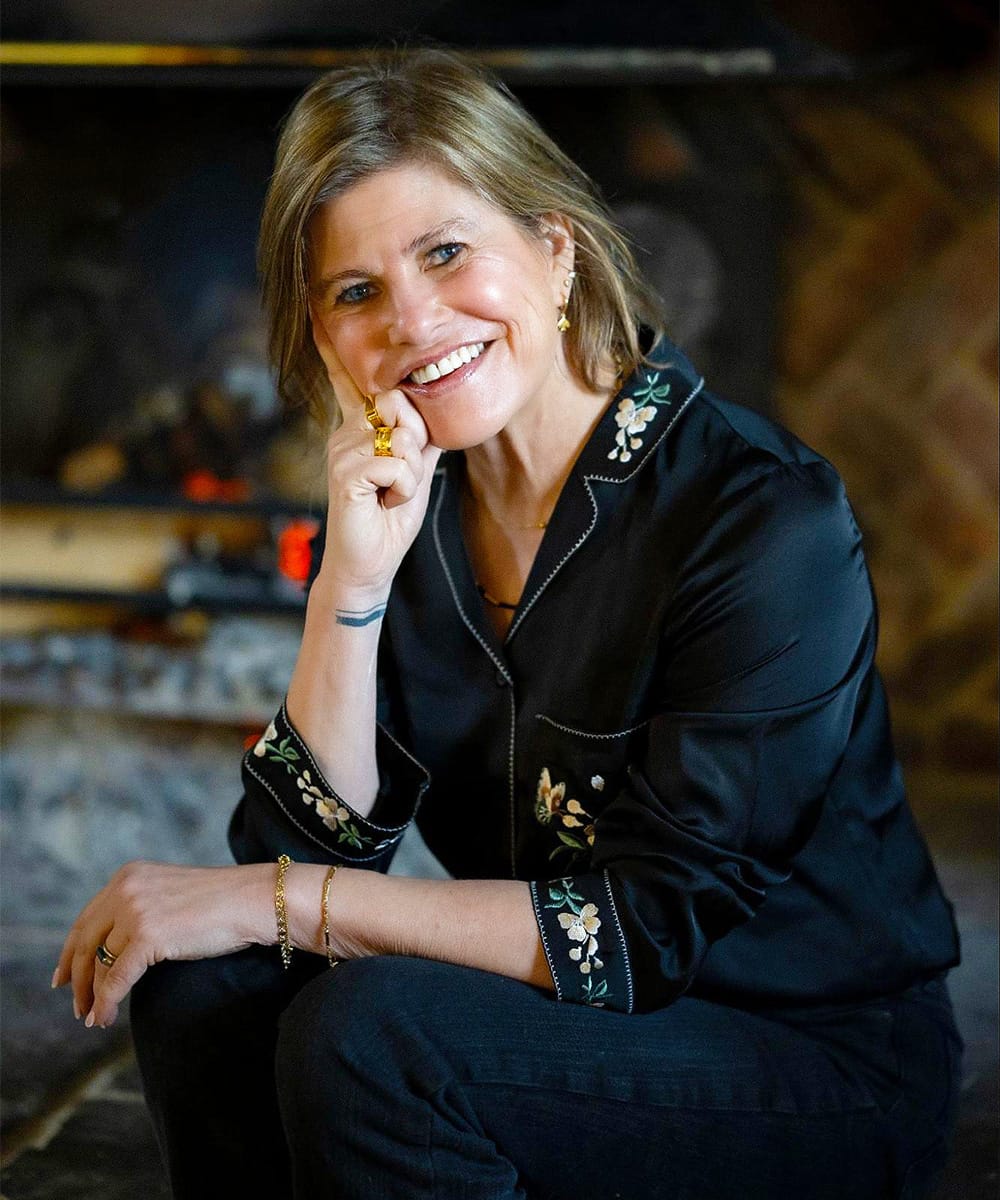
Before publishing under the name Clare Leslie Hall, she wrote two domestic noir thrillers—Him and Mine—under the name Clare Empson, which were published in the UK and Germany. These earlier works established her reputation for psychological depth and her ability to explore the darker undercurrents of domestic life. Her transition to writing under Clare Leslie Hall marked a shift toward more sweeping, literary narratives that blend romance, mystery, and historical fiction.
Hall has long admired The Go-Between by L.P. Hartley, and Broken Country is her homage to that classic novel, featuring a forbidden love affair with catastrophic repercussions that echo across time. Her inspiration for Broken Country came from her fascination with the enduring power of first love and the ways that early relationships shape our entire lives, even decades later. She wanted to explore what happens when the past intrudes on the present—when the person you once were collides with the person you have become.
The author spent considerable time researching the social and agricultural landscape of 1950s and 1960s Dorset, visiting museums, studying historical farming practices, and interviewing people who lived through that era. This immersive research allowed her to create a richly textured world that feels both authentic and evocative. The farming rhythms, class dynamics, and social expectations of post-war rural England are rendered with meticulous care, grounding the emotional drama in a fully realized historical setting.
Hall's writing process is deeply disciplined. She typically works at her desk by 9 a.m. with black coffee, spending four to five hours immersed in her characters' lives when the writing is flowing well. She has spoken about the importance of taking time away from her desk to visit museums, galleries, and landscapes that inspire her, believing that ideas come when she changes her surroundings rather than when she searches for them directly.
Broken Country became her U.S. debut and was selected as a Reese's Book Club pick, catapulting it to widespread acclaim. The novel has already been optioned for film adaptation by Sony Pictures and Hello Sunshine, with production underway. Readers and critics alike have praised Hall's exquisite prose, her ability to create morally complex characters, and her skill at weaving together romance, mystery, and family drama into a compulsively readable narrative.
Hall is recognized for her accessible, yet literary, writing style, which combines emotional depth with page-turning pacing. Her characters are flawed, deeply human, and utterly unforgettable, and her exploration of themes like guilt, loyalty, grief, and redemption resonates powerfully with readers. She continues to write stories that challenge, move, and illuminate the intricacies of the human heart, cementing her place as one of the most exciting voices in contemporary literary fiction.

Notable Quotes from Broken Country:
"The farmer is dead. He is dead, and all anyone wants to know is who killed him."
Speaker: Narrator/Beth
Location in book: Opening line of the novel
"It's strange, the patchwork stories we tell someone when we want them to catch up, a shortcut to knowing us, as if such a thing were possible."
Speaker: Beth
Location in book: Reflecting on reconnecting with Gabriel
"But we are not who we once were. He is a father, and I was a mother, our identities as merged as they once were separated. You can never change back once you've had a child, even if that child no longer exists."
Speaker: Beth
Location in book: Contemplating her shared experience of parenthood with Gabriel after Bobby's death
"Don't say that. You have to fool yourself into thinking you already are the thing you want to become."
Speaker: Gabriel
Location in book: Conversation about aspirations and identity
"Beer is God's reward for an honest day's toil."
Speaker: Frank or Jimmy
Location in book: Reflecting on farm life
"Is it normal to love one person your whole life like you and Daddy?"
Speaker: Bobby
Location in book: Conversation with Beth before his death
"At the school, my son's confidence amazes me. Most of the new kindergarten children are clinging to their mothers, but Bobby saunters toward his classroom without a backward glance. At the last moment he remembers me, sprinting back to whisper in my ear, 'Will you be all right without me?' No, Bobby. Let's go home. We'll try this another day, I manage not to say. 'I'll be fine. You go and have some fun.'"
Speaker: Beth
Location in book: Memory of Bobby's first day of school
"Remember mine / For its glory-stretch of furious light and wondrous beauty. / The world we love-lived / Is earth / Is dust / Is me, Dad."
Speaker: Bobby (from a poem or letter)
Location in book: Referenced as Bobby's words or writing
"This is a love story with too many beginnings. I refuse to think about how it is going to end."
Speaker: Beth
Location in book: Early in the rekindled relationship with Gabriel
"Should I be worried about you spending time with Wolfe and his son?"
Speaker: Frank
Location in book: Confronting Beth about Gabriel.

Historical Facts Behind Broken Country
The novel is set in Hemston, a fictional small farming village in North Dorset, England, during the 1950s and 1960s—a period of significant social and agricultural transformation in rural Britain. Post-war England was rebuilding, and farming communities, like the one depicted were the backbone of the country's recovery, yet they also faced modernization pressures and changing social norms.
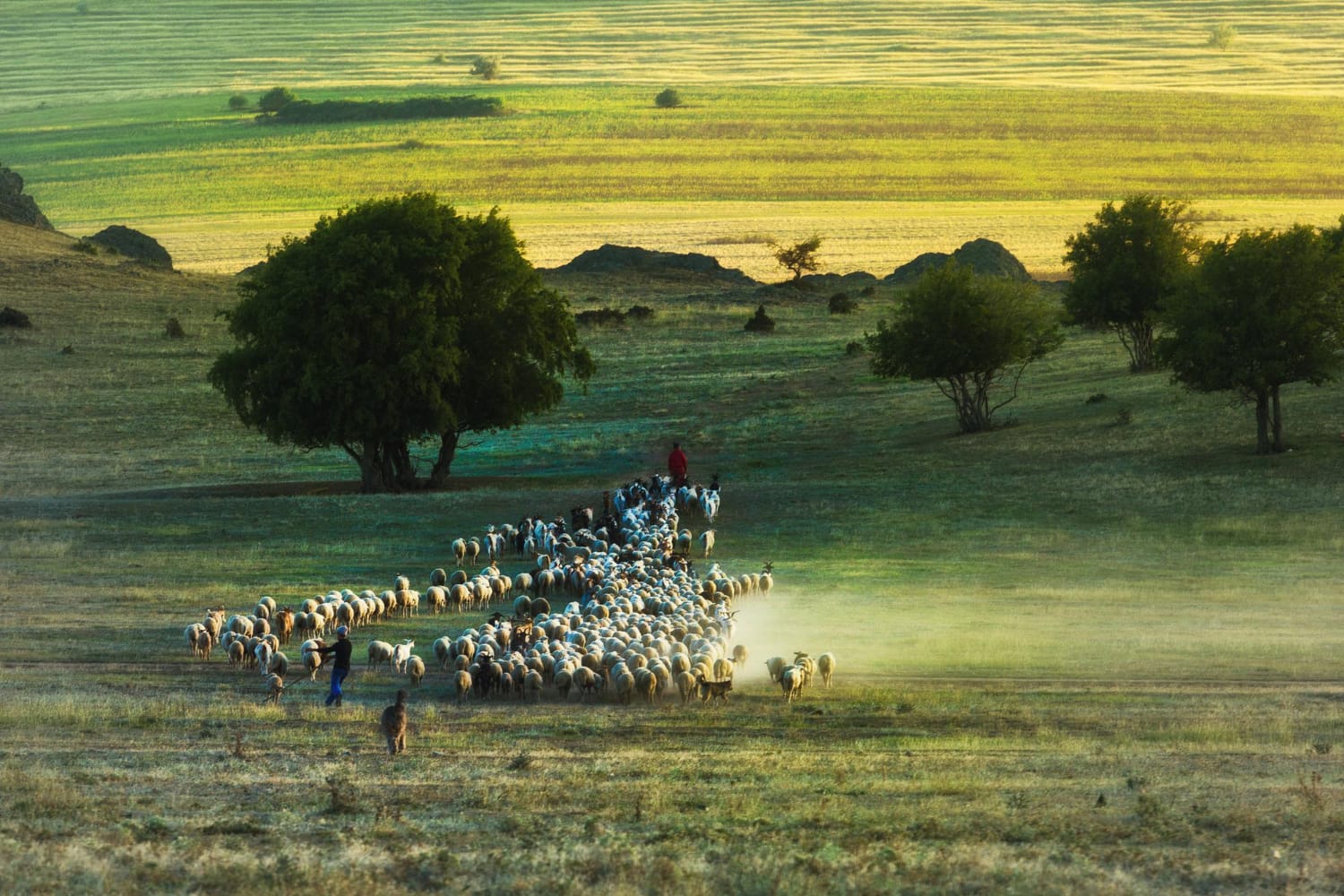
The 1950s and 1960s marked a pivotal era for British agriculture, with mechanization beginning to replace traditional labor-intensive farming methods. Sheep farming, central to the novel's setting, was (and remains) a cornerstone of Dorset's rural economy. The rhythms of lambing, shearing, and market days dictated the calendar and social life of farming communities, creating tight-knit networks where everyone knew everyone else's business.
Class structures in 1950s rural England were rigid and deeply entrenched. Gabriel's family, living in the manor house, represented the landed gentry, while Beth and Frank's farming families occupied a lower social position. Cross-class romantic relationships were often discouraged or actively prevented by families concerned with maintaining social boundaries and inheritances. Tessa Wolfe's interference in Beth and Gabriel's relationship reflects the reality of class-conscious parents protecting their children's "suitable" matches.
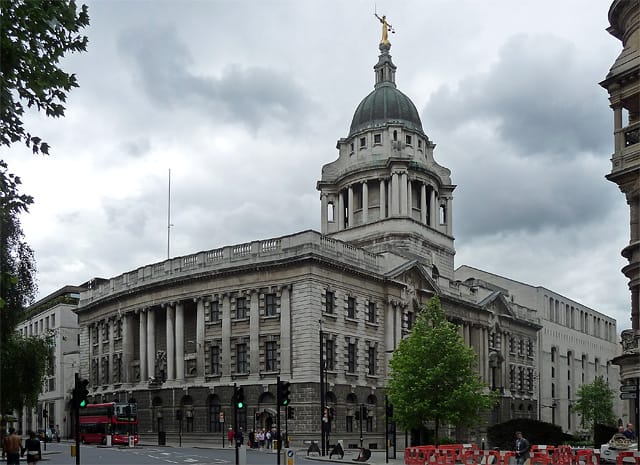
The courtroom trial scenes in Broken Country reflect the British criminal justice system of the late 1960s. Trials at the Old Bailey, London's Central Criminal Court, were (and remain) the venue for serious criminal cases. The jury system, often called "the jewel in the Crown" of British justice, was fully established by this period. Defendants had the right to trial by jury for indictable offenses, though the process was far more formal and class-conscious than modern proceedings.
The agricultural landscape of Dorset in this period was characterized by small family farms, often passed down through generations. The death of livestock due to predators or disease was a serious economic blow, making Jimmy's shooting of Gabriel's dog—while tragic—understandable within the farming context where protecting sheep from attack was a farmer's duty and economic necessity.
The 1950s and 1960s saw the first publications of agricultural journals like The Dorset Farmer, which documented the challenges and innovations of the era. Farming families faced constant pressures from weather, disease, market fluctuations, and the physical dangers of farm work. Accidents like the tree-felling incident that killed Bobby were not uncommon in this period when safety regulations were minimal.
Mental health and grief counseling were rarely available or discussed in 1950s and 1960s rural England. Families like Beth and Frank's were expected to cope privately with tragedy, and the inability to openly discuss grief—particularly the loss of a child—was typical of the era's emotional restraint. This cultural expectation to "carry on" without complaint or emotional display contributes directly to the unspoken chasm between Beth and Frank after Bobby's death.
Divorce was still relatively uncommon and socially stigmatized in 1950s and 1960s Britain, particularly in conservative rural communities. Gabriel's divorce from his American wife would have been noted and discussed throughout the village. His return as a divorced man with a child would have made him a subject of gossip and speculation.
The post-war period saw increased social mobility, with grammar school education and university opportunities beginning to open up to bright students from working-class backgrounds. However, the tension between staying in one's community and pursuing education elsewhere (as Gabriel did) often created painful choices and family conflicts. Beth's decision not to pursue Oxford and Gabriel's departure for university reflect the era's educational opportunities and the class and gender barriers that still constrained them.
Clare Leslie Hall conducted extensive research into Dorset's farming history, social structures, and daily life of the period to create an authentic portrayal of this world. Her immersion in museums, historical records, and interviews with people who lived through the era ensures that Broken Country offers readers both emotional truth and historical accuracy, bringing to life a vanished world where passion, duty, and social expectation collided with devastating consequences.

These questions are designed to encourage participants to think deeply, make personal connections, and explore the literary craft within the book. It is recommended that you choose 8-10 questions that you think would best suit your group. The first fifteen can be safely discussed with readers who have not finished the book, while the final five are best for a deep, reflective discussion after everyone has reached the end.
- The title Broken Country has multiple meanings. How does the idea of brokenness manifest in the landscape, the community, and the characters' lives?
- Which early scene or relationship sets the emotional tone for Beth's journey, and how does it evolve throughout the story?
- How do Beth's relationships with Frank and Gabriel reveal different sides of her character? What does each man represent for her?
- What role does class and social expectation play in shaping the characters' choices, particularly in Beth and Gabriel's teenage romance?
- When did Beth seem most sympathetic, and when did you find her choices most difficult to understand or support?
- What images, symbols, or motifs (such as sheep, the countryside, or the dog shooting) stood out as representing hope, loss, or consequences?
- If you could annotate a single passage, what would you mark for future readers, and what does it encapsulate about the novel?
- How does grief affect each character differently, and what does the novel suggest about the ways we process loss?
- How does the historical setting—1950s and 1960s rural England—shape the emotional impact and plausibility of the story?
- Which character changes the most over the course of the novel, and what catalyzes that transformation?
- What aspect of Clare Leslie Hall's writing style was most effective in immersing you in the story—the dual timelines, the prose, or something else?
- How does the novel invite empathy for even its most flawed characters, including Beth during her affair?
- What does "home" come to mean for different characters, and how does this definition shift throughout the narrative?
- How are loyalty, betrayal, and sacrifice explored, particularly through Frank's actions and Jimmy's protectiveness?
- How does the motif of watching—by neighbors, by family, by the community—affect the characters' actions and decisions?
Deep Dive (Post-Ending) Questions
- What emotions did the revelation about Bobby's true parentage evoke, and how did this knowledge reframe your understanding of Frank's character and choices?
- Discuss Frank's decision to take the blame for Leo shooting Jimmy. Was this an act of love, guilt, sacrifice, or something else? How did it make you feel about Frank?
- The ending shows Grace's birth and Frank's return from prison. Do you read this conclusion as hopeful, ambiguous, or bittersweet? Does Beth deserve this second chance?
- Do you believe Beth truly loved both Frank and Gabriel, or was one relationship more genuine? Is it possible to love two people equally but differently?
- If Beth's story were set today, what might be different about her choices, the community's response, and the consequences? What would remain the same?.


Here are 11 evocative, on-theme decorating ideas for a Broken Country book club meeting, grounded in its 1950s-1960s Dorset farming setting, sheep farming life, class distinctions, countryside atmosphere, and courtroom trial motifs drawn from the novel's plot and imagery. You can use these to build immersive tablescapes, wall moments, and cozy nooks that echo Beth's journey through passion, loss, and impossible choices.
The Printable Book Club Kit includes a photographic image for each decorating idea!

Pastoral Wool and Fleece Centerpiece
Create a rustic centerpiece using natural wool fleece, small wooden fence pieces, and miniature sheep figurines arranged on a burlap runner to evoke the sheep farming at the heart of Frank and Jimmy's livelihood. Add sprigs of lavender or wildflowers in small mason jars to suggest the Dorset countryside where the story unfolds, honoring the agricultural rhythms that shape the characters' lives.
Dual Timeline Table Settings
Set up two distinct table sections: one side with delicate china, lace doilies, and a small framed photo to represent the 1950s "past" timeline when Beth and Gabriel first fell in love; the other side with simpler earthenware, rough linen, and a courtroom gavel or law book to represent the 1968 "present" timeline and the trial. This visual contrast highlights the novel's structure and the passage of time between innocence and consequence.
Manor House Meets Farmhouse Contrast
On one end of your display, arrange elegant elements like a silver candlestick, vintage books, and a framed manor house image to represent Gabriel's privileged background at Meadowlands; on the opposite end, place working farm items like rope, worn gardening gloves, and a milk jug to represent Frank's humble farming life. This divide illustrates the class tension that shaped Beth's choices and the story's romantic triangle.
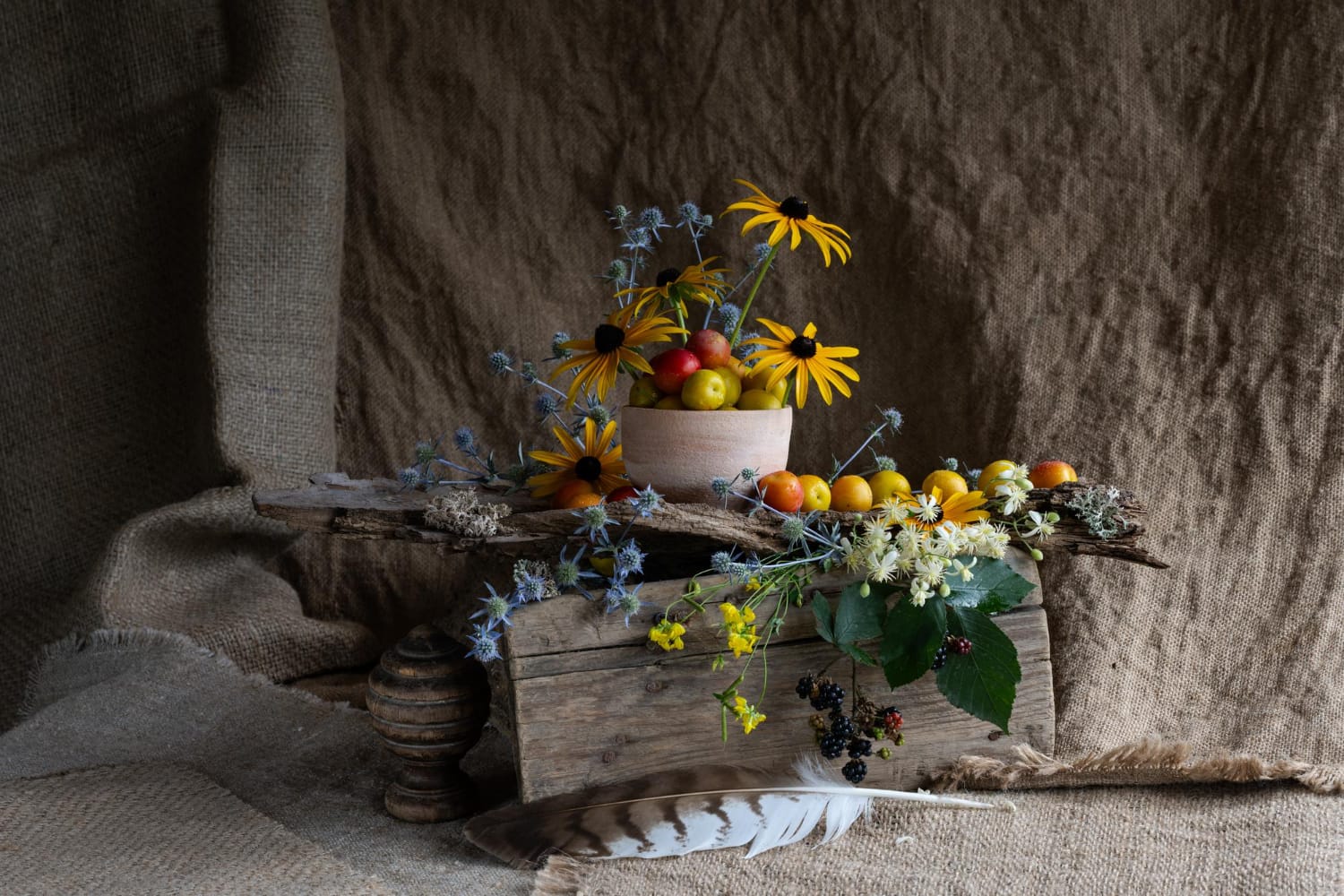
English Countryside Color Palette
Keep your linens, florals, and accents in soft greens, heather purples, stone grays, wheat golds, and cream—colors that evoke the rolling hills and pastoral beauty of North Dorset. Use natural textures like linen, wool, weathered wood, and wildflowers to create an atmosphere that feels authentic to the rural English setting and the novel's connection to the land.
Quote Cards and Memory Fragments
Hand-letter short quotes like "The farmer is dead," "This is a love story with too many beginnings," and "You can never change back once you've had a child" on kraft paper cards and place them at each setting or scatter them throughout the space. Keep the typography simple and clean to match the era's restraint and the story's emotional weight without overwhelming the conversation space.
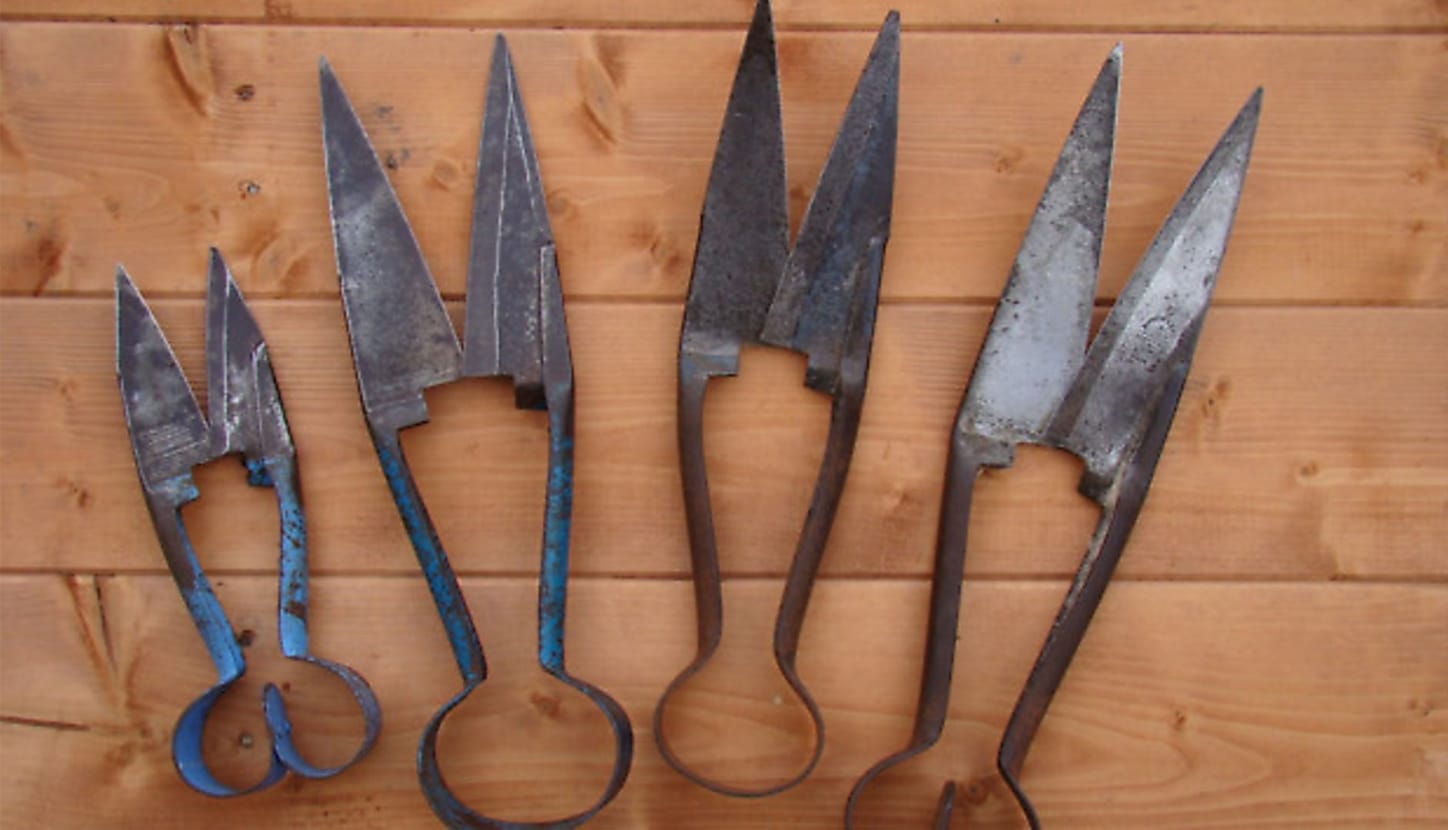
Sheep and Farming Implements Display
Arrange a small vignette with a coiled length of rope, a shepherd's crook (or walking stick), shearing scissors, and a small bell on a side table to represent the daily work of sheep farming that defines the Johnson family's life. Add a small placard noting "Frank's Farm" or "Hemston Village" to anchor this display in the novel's world without becoming too literal.
Courtroom Elements Corner
Create a subtle legal-themed corner with a gavel on a wooden block, a vintage law book, scales of justice, and a simple "Old Bailey" nameplate to reference the trial that dominates the novel's climax. Keep this display understated—just enough to signal the courtroom drama without making your space feel like a courthouse, allowing guests to discuss the trial's shocking revelations.
First Love Mementos Table
Set up a small tableau with items that suggest teenage romance: an old bicycle bell, pressed wildflowers in a book, a vintage fountain pen and paper, a worn novel, and a small heart-shaped stone. This arrangement evokes Beth and Gabriel's youthful love affair in 1955—innocent, passionate, and formative—before life's complications intervened.
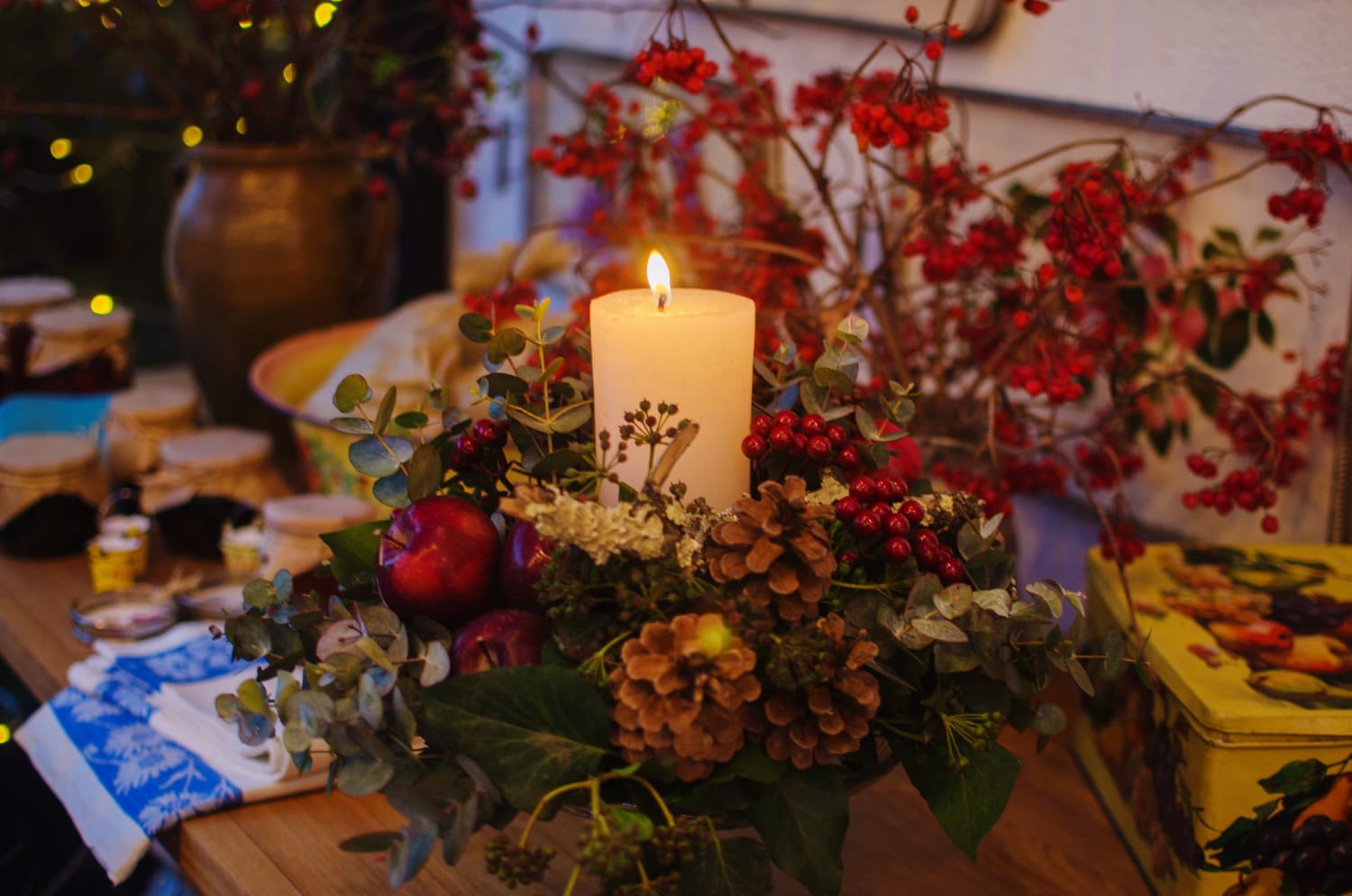
Loss and Remembrance Candle Station
Create a quiet, reflective corner with white or cream pillar candles, a small framed photo space (left empty or with a generic child's image), and a simple card reading "In memory of Bobby" to honor the novel's central tragedy. This station acknowledges the grief that shapes Beth and Frank's marriage without being maudlin, offering a moment for reflection on the book's themes of loss and endurance.
Village Life Vintage Touches
Scatter period-appropriate elements throughout your space: vintage milk bottles, a 1950s-style teapot, old farming journals or newspapers, a small vintage radio, and black-and-white photographs of the English countryside to create an immersive mid-century rural English atmosphere. These details transport guests to the tight-knit village of Hemston, where everyone knows everyone's business and secrets rarely stay buried.
Character Icon Place Settings
Create small icon cards for each place setting: Beth with a heart divided in two (representing her torn loyalties), Frank with a sheep (his livelihood and gentle nature), Gabriel with a pen (he's a writer), Jimmy with a rifle (the fateful shooting), Leo with a small child's toy, and Bobby with a tree (his tragic death). These visual cues help guests track the complex relationships and key moments while subtly reinforcing the story's themes of choice, consequence, and sacrifice.
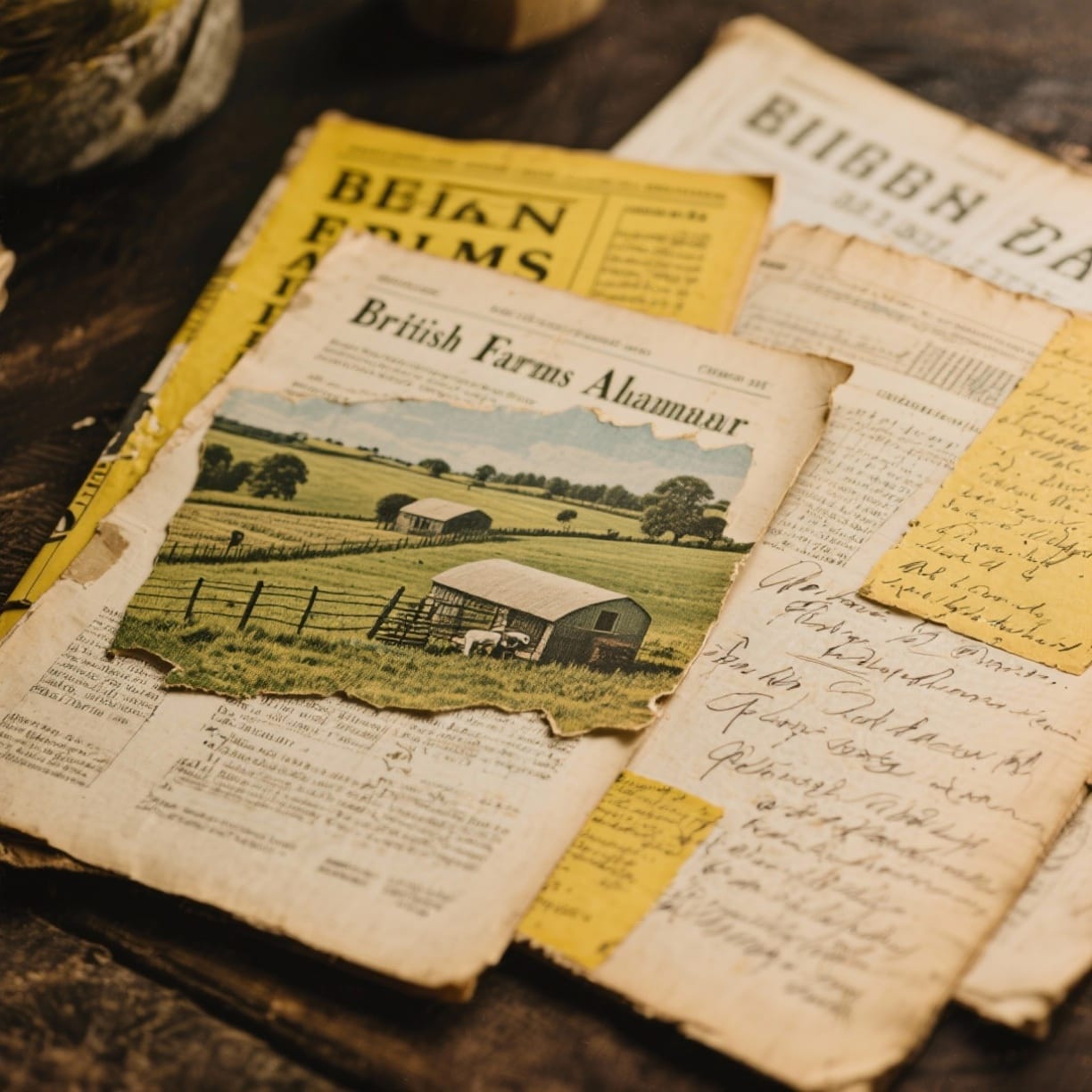
Seasons and Farming Calendar Display
Arrange a small chalkboard or printed calendar showing lambing season, harvest time, and market days—the agricultural rhythms that structure farm life—alongside pressed flowers and wheat stalks to show how the natural world's cycles contrast with the emotional upheaval of the characters. This display grounds the drama in the steady, demanding work of the land that continues regardless of human heartbreak.

- "Two Truths and a Lie: Love Triangle Edition" (In printable kit)
- "Timeline Challenge: Past Meets Present" (In printable kit)
- "Character Loyalty Quiz: Team Frank vs. Team Gabriel" (In printable kit)

Here are themed menu ideas for appetizers, main courses, desserts, and beverages inspired by Clare Leslie Hall's Broken Country, balancing the rustic English farming life of Frank's world with the more refined manor house atmosphere of Gabriel's upbringing, all set in 1950s-1960s Dorset. These dishes evoke the hearty sustenance of sheep farmers, the nostalgia of mid-century British cooking, and the emotional landscape of the novel.
Appetizers
Begin with traditional English farmhouse starters that reflect the simple, honest food of the countryside—the kind of fare that would have been served at a village gathering or after a long day working the land.
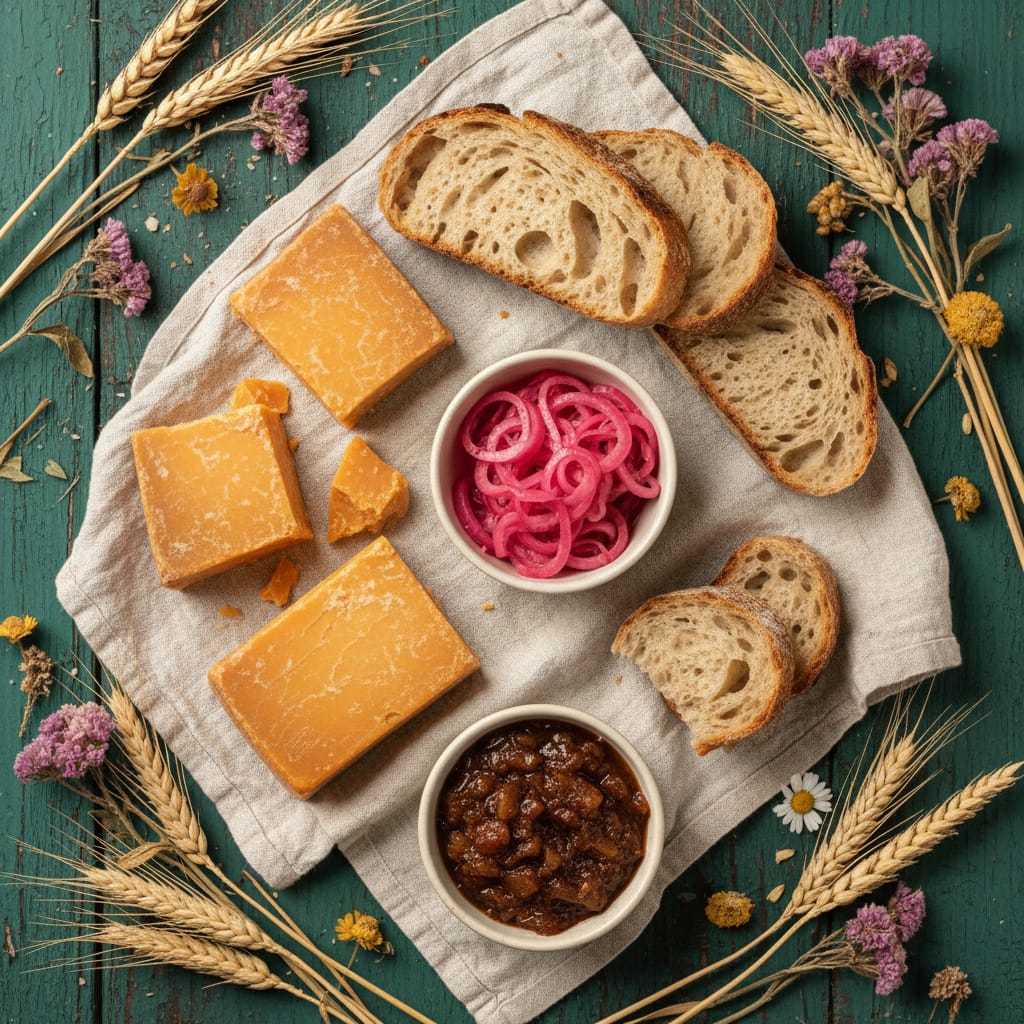
Cheddar and Pickle Ploughman's Platter
Aged farmhouse cheddar, crusty bread, pickled onions, and chutney—a classic British ploughman's lunch that honors the farming life central to the story.
Deviled Eggs with Paprika
Simple deviled eggs with a sprinkle of paprika, a popular 1950s-1960s party food that Beth might have prepared for a village gathering.
Sausage Rolls
Flaky pastry wrapped around seasoned pork sausage, a British staple perfect for book clubs and evocative of village fetes and farm suppers.

Pineapple and Cheese Hedgehog
A whimsical 1950s-1960s party centerpiece: a pineapple studded with cheese cubes on cocktail sticks—playful, retro, and period-perfect for the era.
Main Courses
Center your meal around lamb—the heart of the Johnson family farm—and other hearty British dishes that sustained farming communities through long, hard days.
Roast Leg of Lamb with Mint Sauce
A traditional Sunday roast featuring lamb, honoring the sheep farming that defines Frank's life and the novel's agricultural setting.

Shepherd's Pie
Ground lamb with vegetables topped with creamy mashed potatoes—quintessential English comfort food that would have been a staple in farmhouse kitchens.
Lancashire Hotpot
A slow-cooked lamb and potato casserole, a warming dish perfect for the cold Dorset countryside and reflecting the resourcefulness of farming families.
Cottage Pie with Beef
An alternative to shepherd's pie using beef, offering variety while staying true to the era's hearty, economical cooking style.
Garden Vegetable Side
Roasted root vegetables (carrots, parsnips, and turnips) with butter and herbs, representing the kitchen gardens that sustained rural households.
Desserts
Offer classic British puddings and sweet treats from the 1950s-1960s era—comforting, nostalgic desserts that evoke both celebration and the simple pleasures of village life.
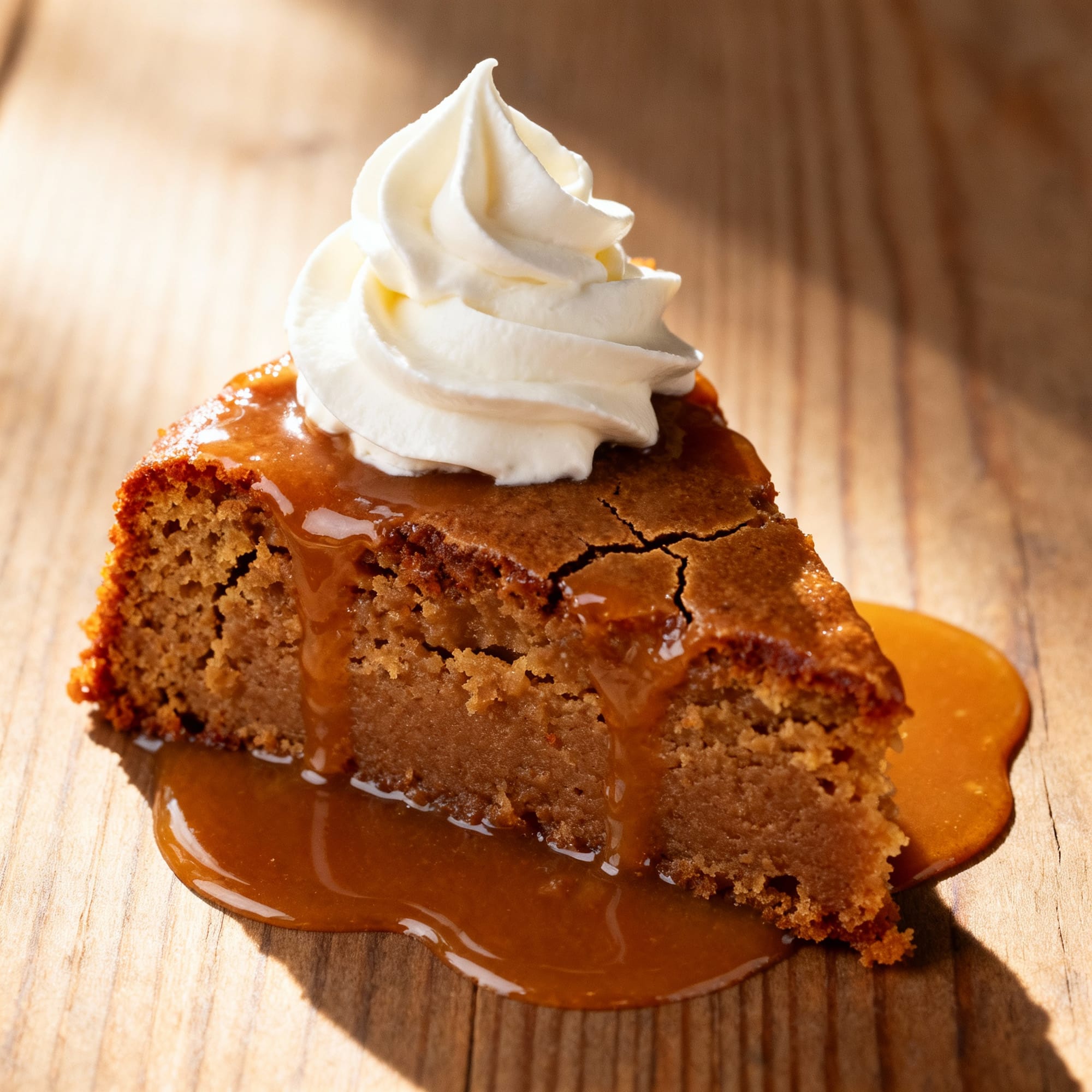
Sticky Toffee Pudding
A rich, moist date cake with toffee sauce and cream—decadent, warming, and classically British.
Sherry Trifle
Layers of sponge cake, custard, fruit, jelly, and whipped cream—a festive 1950s-1960s centerpiece dessert for special occasions.
Apple Crumble with Custard
Baked apples with a crumbly topping served warm with pouring custard—simple, seasonal, and emblematic of English country cooking.
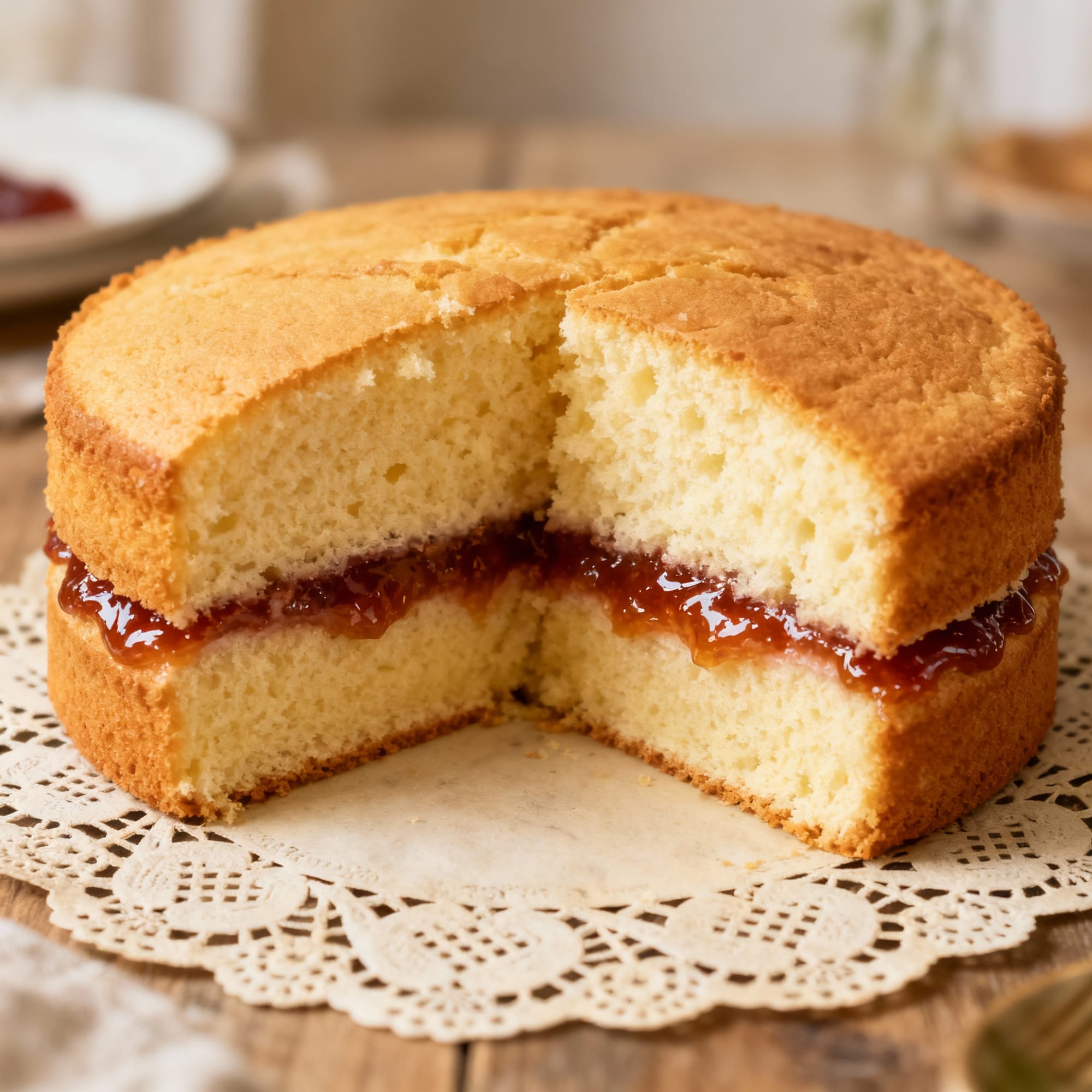
Victoria Sponge Cake
A light sponge cake filled with jam and cream, named after Queen Victoria and a staple of British tea time throughout the 20th century.
Beverages
Serve traditional British drinks that reflect both the farmhouse and manor house worlds, offering warmth, refreshment, and a touch of celebration.
English Breakfast Tea
Strong black tea with milk—the daily staple of British life, essential at any gathering from farmhouse kitchen to manor house drawing room.
Gin and Tonic
A classic British cocktail that would have been served at Gabriel's family home—crisp, refreshing, and slightly elegant.

Cider (Hard or Soft)
Traditional English cider, either alcoholic or non-alcoholic, representing the rural orchards and countryside pubs central to village social life.
Shandy (Beer and Lemonade)
A light, refreshing mixed drink popular in British pubs—perfect for a casual book club gathering and evocative of Frank's post-work refreshment.
Sherry
Sweet or dry sherry, a popular aperitif in 1950s-1960s Britain, representing the more refined social world of the manor house.

Get Clare Leslie Hall Books
A beautifully written debut!
Bookshop.org was created as a socially conscious alternative to Amazon, with the goal of helping local, independent bookstores thrive. This is why Readers With Wrinkles supports their efforts. Please join us in this effort by purchasing your next read here.

Broken Country printable BOOK CLUB KIT
The RWW book club kits provide everything you need to organize a great meeting with insightful discussions. These resources simplify book club preparation with character lists, book quotes, refreshment suggestions, recipes, and carefully prepared book club questions!

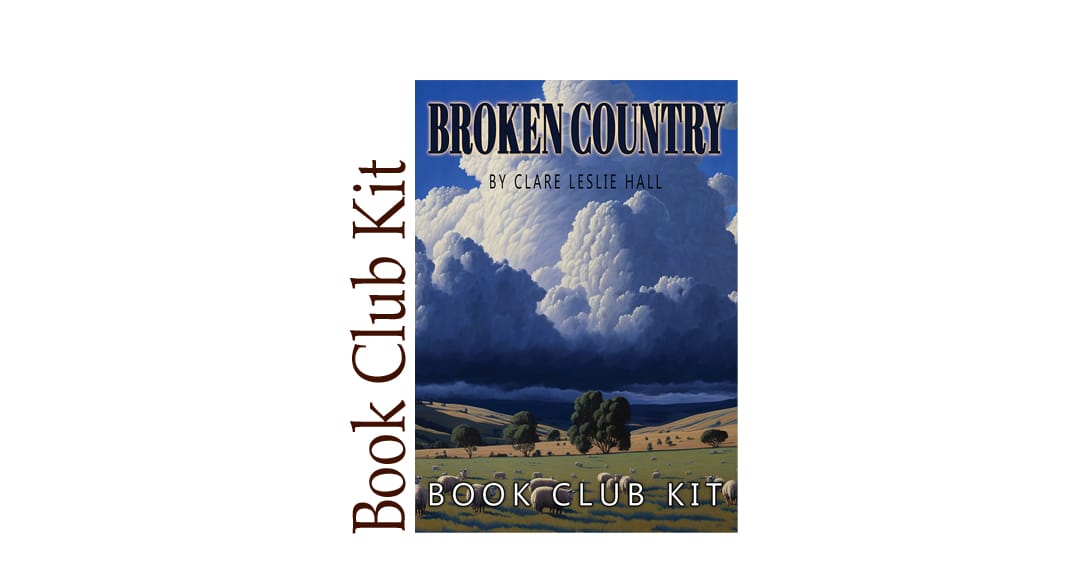
Comments